- europages
- >
- COMPANIES - SUPPLIERS - SERVICE PROVIDERS
- >
- fruit tree
Results for
Fruit tree - Import export
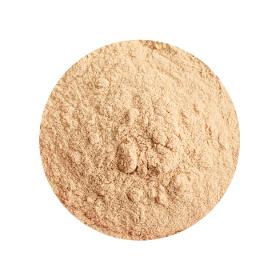
VEHGRO B.V
Germany
"Baobab powder The baobab is the fruit of the baobab tree also called the Adansonia Digitata or monkey bread tree. The last name the tree owes to the many species of monkeys that live off the baobab fruits. The tree can grow very old and is the largest tree in Africa. Not only the fruit is useful for life in Africa. Almost all parts of the tree are useful so it is popularly called ""Tree of Life"". A nice example is that it uses its trunk as a water reservoir. During the rainy season, the monkey loaf tree provides sufficient reserves so that it can survive the dry periods. The tribe is then used by the population as a shop, cattle shed or bus shelter. The fruit has a very high antioxidant content. Baobab powder is also an excellent source of calcium and very rich in vitamins and minerals. After the fruit is processed into powder it consists for about 50% of fiber (pectin) which works as prebiotics. An extraordinary power food<…"
Request for a quote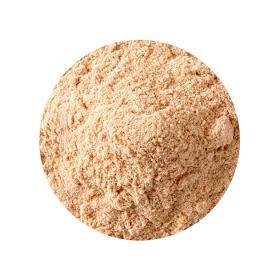
VEHGRO B.V
Germany
"History and Origin Lucuma has been called the 'gold of the Incas'. Lucuma has been cultivated in the Peruvian highlands since 200 AD, when people discovered the caramel-sweet fruit. In Peru, 26 villages are named after this beloved fruit. The lucuma tree grows best at an altitude between 450 and 1000 metres. The tree can withstand drought well, but cannot withstand frost. High humidity is needed to produce the fruit. Lucuma trees only start producing fruit after 5 years and each tree produces up to 500 fruits per year. The fruits are yellow-brown in colour and can weigh up to one kilo each. Processing into Lucuma powder The lucuma tree bears fruit throughout the year, but the main harvest takes place in spring between January and April. When the fruit falls from the lucuma tree it is not yet ripe and the pulp is too hard to be edible. The fruit must be stored under hay until the bitter white latex breaks down and the pulp softens, but even when the fru…"
Request for a quote
VEHGRO B.V
Germany
"Origin Of Tonka beans Tonka beans (Dipteryx odorata) Tonka beans grow on a Tonka tree and are the seeds of fruit that these trees bear. Tonka beans are narrow, black elongated and wrinkled beans with a brown inside. Production process Tonka beans After the seeds have been harvested, they are dried and soaked in alcohol or rum for a day. Tonka beans soaked in rum give a taste of vanilla, almond and rum. That makes them a perfect seasoning of desserts and patisserie. After adding the alcohol, the beans are dried again and a fermentation process takes place. Tonka beans applications Tonka beans are a common ingredient of desserts, the garnish of desserts (ganache), caramel sugar, ice cream or patisserie."
Request for a quote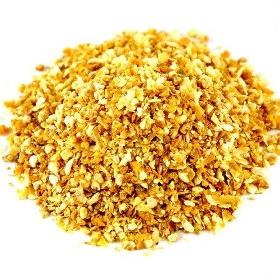
VEHGRO B.V
Germany
"Origin Lemon peel granulate is made from the peel of the lemon. The lemon is a fruit of the lemon tree (Citrus Limonum). The lemon is native to Asia, but is now common around the Mediterranean and America. This lemon peel granulate comes from Chile. Lemon peel contains up to 10 times more essential nutrients than the juice of the lemon. Nutrients and uses The lemon peel granulate contains vitamins A and C and also minerals like magnesium and calcium. In addition, the lemon peel also contains potassium and beta-carotene. The granulate has a sour and fresh taste, however it does not smell as strong as fresh lemon peel. When peeling a lemon, it is important to peel only the part of the peel that is yellow. The white layer underneath contains many substances that taste bitter. The high vitamin C content in combination with the present flavonoid ensure that this product is a healthy addition to any meal. This lemon peel granule can be added to many differen…"
Request for a quote
VEHGRO B.V
Germany
"Indian Waxnuts The soapnut tree (sapindus mukorossi) is a plant species within the family of soap tree plants. The fruit known as ""sea nut"" is traditionally used in India for washing clothes and hair. For washing, the nuts are cracked and the shells are placed in a cotton bag in the drum. The soap is similar to fabric softener. After washing, the clothes are supple and certainly not hard. Soap notes do not release any fragrant substances. Use Soapnuts can also be used as a general household cleaner, animal care, to wash hair and for in the dishwasher. The amount of nuts needed varies from 3 to 7."
Request for a quote
VEHGRO B.V
Germany
"Origin Lemon peel powder is made from the peel of the lemon. The lemon is a fruit of the lemon tree (Citrus Limonum). The lemon is native to Asia, but is now common around the Mediterranean and America. This lemon peel powder comes from Chile. Lemon peel contains up to 10 times more essential nutrients than the juice of the lemon. Nutrients and uses The lemon peel powder contains vitamins A and C and also minerals like magnesium and calcium. In addition, the lemon peel also contains potassium and beta-carotene. Both the yellow and white parts of the lemon peel are used in this powder, which can give it a bitter taste. The high vitamin C content in combination with the present flavonoids ensure that this product is a healthy addition to any meal. This lemon peel powder can be added to many different dishes such as salads, in desserts, in bakery dishes and in meat dishes. This fresh spice is also frequently used in tea."
Request for a quote
POLYNEO GMBH
Germany
The fruits of the washnut tree or soap tree have been used all over the Asian region for thousands of years as a natural and gentle cleaning agent. The shell of the washnut contains the active cleaning agent saponin. It is highly water soluble and can be used in a wide range of cleaning and personal hygiene applications. PolyNeo offers highly concentrated washnut extract, which can be used for individual processing. It is produced directly in India and supplied as a highly efficient product. The extract has a saponin content of at least 60 per cent higher than that of the washnut, which contains no more than 15 per cent of the active cleaning agent. It is very versatile and can be used as a fluid, paste, powder or in tablet form.
Request for a quote
HORST WALBERG TROCKENFRUCHT IMPORT GMBH
Germany
Productinformation Harvesting of pistachio happens in the middle of september. Pistachio trees look very alike to almond trees, their female trees carry fruit after they have been fertilized through their male counterparts. The very first harvest of pistachio is then possible after seven years, and afterwards in a two-year-cycle. Around april pistachio trees are beginning to bloom. When the plant begins ripening, its pit is growing so fast, it will downright burst open its surrounding shell. Pistachio will be roasted in their shell and are traded salted. These tasty green pits are not only consumed as a snack, they can also be found in special types of sausages or on top of chocolate candy – as they are always a delicious addition. Origin Pistachio are cultivated over extended areas in Iran to Turkey and from Pakistan to India. The United States by now also have an enormous industry branch of producing pistachio.
Request for a quote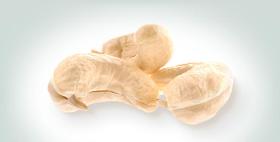
HORST WALBERG TROCKENFRUCHT IMPORT GMBH
Germany
Productinformation Cashew nuts are harvested in India around the time of may and june. The “Kashu” tree derives from the same family of trees as mango- and pistachio-trees. They carry their first fruits approximately after three years - the tree’s maximum carrying capacity is reached after seven years. The cashew tree’s fruit consists of two parts: the cashew “apple” and the actual cashew “nut”, which grows right under the apple part. Cashew nuts are eaten raw in asian regions, but in the rest of the world there are known as a deliciously roasted nut-snack. The cashew apple itself also has a tasty purpose: in the indian market, juices and wine made out of the fruit are very common and popular. Origin India is the major exporting country – especially the national regions of Kerala, Karnataka, Tamil Nadu, Andrdhra Pradesh, Orissa, Maharashtra and Goa. Other countries of origins are Brazil, Mozambique, Kenya, Tansania, Vietnam and Sri Lanka – from America and Africa just over to Asia.
Request for a quote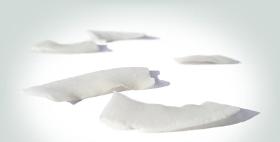
HORST WALBERG TROCKENFRUCHT IMPORT GMBH
Germany
Productinformation Coconuts have been a popular food- and raw material source for thousands of years. On account of their delicious taste and positive traits, coconuts are becoming increasingly popular even in our part of the world. Besides valuable protein, the coconut also provides brain sustenance in the form of fructose as well as palmitic- and oleic acid. The unique characteristics of lauric acid, the main fatty acid in coconuts, have been known for many years. Today, lauric acid is used to counteract viruses, bacteria and fungus, which makes coconut chips a real fitness snack. Origin The coconut palm tree originated in Melanesia, a group of islands in the pacific, north-east of Australia. It spread in part naturally and also through humans. Coconuts can drift a long way in the ocean and remain capable of germinating even after swimming in salty water for 100 days. Polynesian seafarers are responsible for its spread to South-East Asia. The coconut palm tree thrives in the wet and warm tropical belt. Its main growing areas include the Philippines, Indonesia, Sri Lanka, South India, Africa and the coasts and rivers of South America. The tree bears fruit the entire year around and produces - depending on age and location - 30 to 150 ripe coconuts per year. Palm climbers and trained monkeys harvest the coconuts. The coconut is of great value to local people.
Request for a quote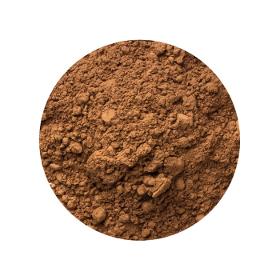
VEHGRO B.V
Germany
"Organic Criollo Cocoa Powder Cocoa powder comes from the cocoa bean, the fruit of the cocoa tree. The cacao tree grows in countries around the equator and produces cacao beans from which, among other things, chocolate is made. To make cocoa powder, cocoa mass from the cocoa bean is used. The mass is pressed under high pressure to produce cocoa powder. Cocoa beans contain more antioxidants than red wine and 3 times more than green tea; cocoa beans are a rich source of minerals. The pods are hand-harvested and selected for the best quality. Our cocoa is also fermented to reduce their initial bitterness. The manufacturing process preserves a significant part of the nutritional value of the beans, without any additives. Criollo Beans Our Cocoa is made from 100% organically grown Criollo Beans. This bean from Africa is known as a rare, high quality bean and is often eaten as a delicacy. The taste is very aromatic and not bitter. Because of these…"
Request for a quote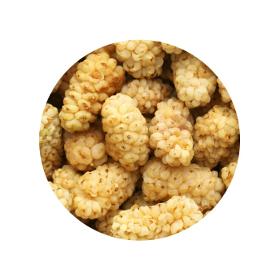
VEHGRO B.V
Germany
"White mulberry plant The white mulberry (Morus alba) is a plant native to China. The mulberry is one of the last trees to flower in summer. The plant has an important value, as it is indispensable for the production of silk. The silkworm is shy and only eats the leaves of this plant. The fruits of the mulberry tree are used for human consumption. Health benefits Mulberries are fat free, low in sodium and are packed with various vitamins and minerals. For example, the mulberry contains vitamins A, B6, C, E, K and the minerals calcium, potassium, magnesium, iron, zinc, copper and phosphorus. It helps to strengthen the eyesight and maintain the blood pressure. Due to the many fibers in the fruit, mulberry makes you feel satisfied quickly. Use of the mulberry You can put dried mulberries through the yogurt or in a fruit salad. You can also add them to a smoothie for extra flavor and nutrients. They are also delicious to eat out of hand or add to a…"
Request for a quote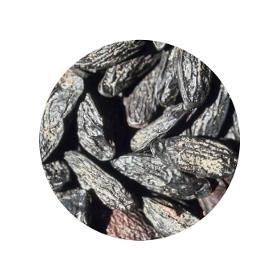
VEHGRO B.V
Germany
"Tonka beans (Dipteryx odorata) Tonkabones grow on a Tonka tree and are the seeds of the fruit that these trees carry. Tonka beans are narrow, black, elongated and wrinkled beans with a brown interior. Once harvested, the seeds are dried and soaked 24 hours a day in alcohol or rum. Tonka beans soaked in rum give a taste of vanilla, almond and rum. This makes them a perfect seasoning for desserts and pastries. After the addition of alcohol, the beans are dried again and a fermentation process takes place. Tonkabones are a widely used ingredient in desserts, the garnishing of desserts (ganache), caramel confectionery, ice cream or patisserie."
Request for a quote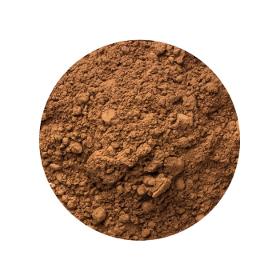
VEHGRO B.V
Germany
"Origin Cocoa Powder Regular Organic Cocoa powder comes from the cocoa bean, the fruit of the cocoa tree. The cocoa tree grows in countries around the equator and produces cocoa beans from which, among other things, chocolate is made. To make cocoa powder, cocoa mass from the cocoa bean is used. The mass is pressed under high pressure to produce cocoa powder. Cocoa beans contain more antioxidants than red wine and 3 times more than green tea; cocoa beans are a rich source of minerals. The pods are hand-harvested and selected for the best quality. Our cocoa is also fermented to reduce their initial bitterness. The manufacturing process preserves a significant part of the nutritional value of the beans, without any additives. Forastero Beans Caocoa Powder Regular Organic comes from the Forastero cocoa tree. Originally this cocoa comes from the Amazon, but now it mainly grows in West Africa. There are 30 to 40 caco beans per pod on this tree. This cocoa involves…"
Request for a quote
W. ULRICH GMBH
Germany
is obtained from the almost ripe fruits of the olive tree (Olea europaea). The fruit is a drupe and has an oil-rich fruit flesh. (15 % - 35 % oil content). Characteristic properties: *high content of oleic acid (C18:1)
Request for a quote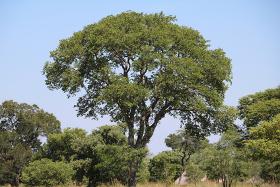
W. ULRICH GMBH
Germany
is obtained by the fruit pits of the marula tree. The fruit pits are extracted by hand from the fruits. The dark yellow to orange oil is obtained by cold pressing. The marula oil has an extremly high content of monounsaturated and polyunsaturated fatty acids and natural antioxidants. The oxidation stability improves in oil mixtures. The high content of palmitic and stearic acid helps to strengthen the skin's own lipid protection.
Request for a quote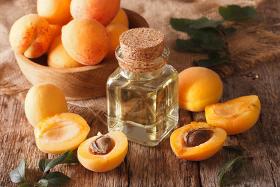
W. ULRICH GMBH
Germany
is obtained from the fruits of the apricot tree. The origin of the apricot tree is in China. The Romans brought it to the Mediaterranean region. Since the 18th century the tree has been cultivated in the USA. The harvest in Europe is in july. The apricot tree reaches a hight of three to four meters. Its fruits are round and four to eight cm big. The fruits are light yellow to orange red. Its kernels are hard and ovally shaped. The oil content of the kernels is 40% to 50%. To obtain the apricot kernel oil the fruits must be picked and the fruit flesh must be removed. The remaining kernels must be cleaned, split and the seeds extracted. Finally the seeds get pressed. The obtained oil is light yellow to yellow, tastes and smells nutty, like marzipan. It has a high content of essential fatty acid residues, vitamin E and unsaturated fatty acids.
Request for a quoteDo you sell or make similar products?
Sign up to europages and have your products listed

W. ULRICH GMBH
Germany
is a light to golden yellow, sticky oil of the fruit seeds of the pomegranate tree, also known as grenadine. Since the ancient times the positive properties of the fruit are well known. The pomegranate tree has its origin in Asia, but meanwhile it is cultivated also in tropical, subtropical regions and also in the Mediterranean region. The tree bears gib, shiny , red-orange fruits with leathery skin. The fruits consists of fruit flesh and several fruit chambers filled with pea-sized seeds. The light golden yellow, nutty smelling oil is obtained by extraction of the seeds. The oil is very valuable, as of 100 kg pomegranate only about 500 g oil can be obtained. It is characterized by its high content of exceptional and rare fatty acids. Furthermore the oil contains potassium, calcium, iron and vitamin C+E. That is why it is ususally used as ingrediant for cremes, soaps and lotions. Due to a too high concentration the skin can dry out.
Request for a quote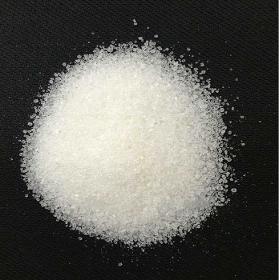
WOOVE GMBH
Germany
Applications: In Agriculture It is one of the most common use and most typical inorganic nitrogen fertilizer. It is the best fast release, quick acting fertilizer, can be directly used for a variety of soil and crops, can be used as kinds of seed fertilizers, base fertilizer and additional fertilizer. Particularly suitable for the soil which lack of sulfur, low chlorine tolerance crops, sulfurphilic crops. Suitable for the rice seedling, the growth of tea, grass, vegetables, and fruit trees, effectually rapid promoting the growth of grain, vegetables, fruits, grass and other plants. It have more efficiency than urea, ammonium bicarbonate, ammonium chloride, ammonium nitrate. Large granular ammonium sulphate can also serve as raw material for compound fertilizer. As feed additives, it provide the nutrients of non-protein nitrogen to ruminants. It also used for fish culture in some areas.
Results for
Fruit tree - Import exportNumber of results
20 ProductsCountries
Company type